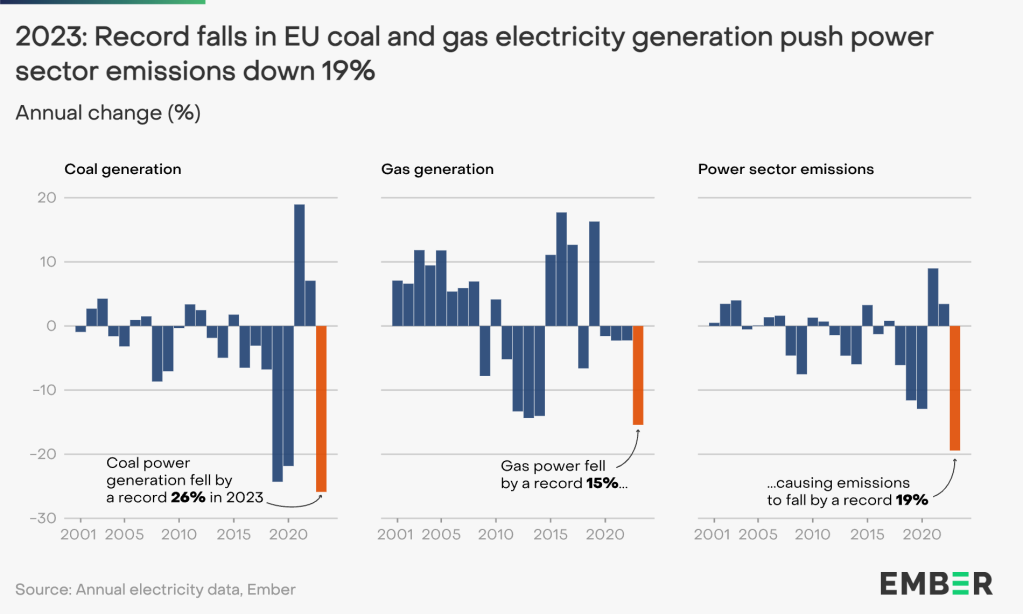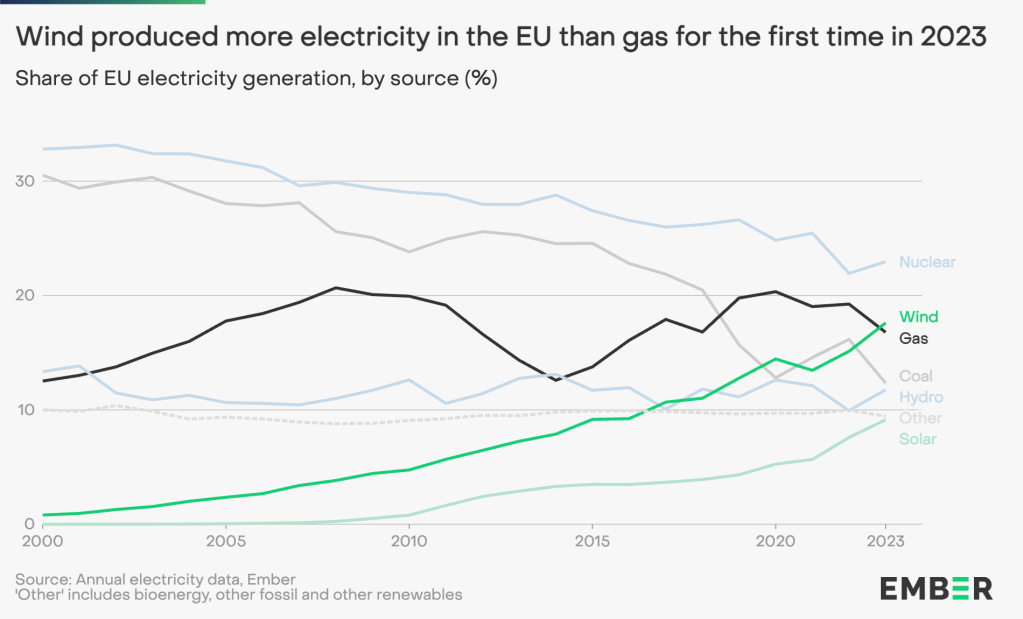
Europe’s coal electricity generation tanked by 26% and gas by 15% in 2023, according to a new report from energy think tank Ember.

That collapse resulted in an impressive 19% reduction in the EU’s power sector emissions. What’s more, for the first time, wind power, which grew by 18%, surpassed gas, which only accounted for 17% of Europe’s electricity.
Wind and solar power are now taking center stage. Together, they hit a new high, generating 27% of the EU’s electricity in 2023. Solar covered 9% of the EU’s electricity needs. With hydroelectric power also bouncing back, renewables reached a record 44% share of the EU’s power mix.

“The EU’s power sector is in the middle of a monumental shift,” said Sarah Brown, Ember’s Europe program director. “Fossil fuels are playing a smaller role than ever as a system with wind and solar as its backbone comes into view.”
Interestingly, Europe’s shift away from fossil fuels wasn’t just about swapping coal and gas for wind and solar. People and businesses used less electricity overall, with demand dropping by 3.4% compared to 2022. A significant chunk of this reduction came from industries dialing back their power use.
But as Europe moves more toward EVs, heat pumps, and other electrification, electricity demand is expected to rise again. This means renewables need to keep up the pace, especially since the EU is aiming for wind and solar to provide 55% of its power by 2030.
Ember’s report also points out that in 2023, Europe increasingly relied on wind and solar, as 24% of hours in 2023 saw less than a quarter of electricity coming from fossil fuels, a major step up from just 4% of hours in 2022.
The takeaway? The EU’s energy landscape is transforming fast, driven by the need for clean power and the urgency of the climate crisis. Coal and gas are on their way out, and renewables are stepping up. But there’s no room for complacency – Europe needs to double down on deploying wind, solar, and the tech that supports them.
